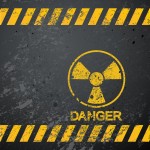About 12,000 air samples taken on the Hanford Nuclear Reservation in Washington this year after more than three dozen workers reported being sickened by chemical vapors have failed to find a cause for the problem, Hanford officials said Wednesday.
But Hanford officials said that doesn’t mean workers aren’t getting sick.
“Our workers are not exposed to vapors, but they are having symptoms,” said Tom Fletcher of the U.S. Department of Energy, which manages Hanford. “The question is: ‘Why?”‘
“This isn’t something we are taking lightly,” Fletcher said.
None of the 12,000 air samples taken this year showed chemical levels above occupational-exposure limits, Fletcher said. In fact, more than 50,000 air samples dating back to 2007 found no chemical exposure above the allowable limits, he said.
 Hanford officials are hoping an investigation being conducted by the Savannah River National Laboratory might shed light on what is causing the illnesses. A draft of that report is due by October.
Hanford officials are hoping an investigation being conducted by the Savannah River National Laboratory might shed light on what is causing the illnesses. A draft of that report is due by October.
Hanford for more than four decades made plutonium for nuclear weapons, and it now contains the nation’s greatest volume of nuclear waste. Much of the waste is stored in 177 giant underground storage tanks. It is workers at those tanks who are reporting smelling chemical vapors and then falling ill.
This year, 38 workers have sought treatment after reporting exposure to chemical vapors. Some of the workers reported irritation in their eyes, nose or throat, or a metallic taste in their mouth, Hanford officials said during a media briefing on Wednesday.
But all 38 workers were checked by doctors and cleared to return to work, Hanford officials said.
Fletcher demonstrated safety precautions taken by Hanford tank workers, and he showed reporters machines that can detect chemicals in the air.
Bob Wilkinson, an environmental safety manager for contractor Washington River Protection Solutions, said the lack of evidence doesn’t mean that workers are not genuinely becoming sick.
“There may be something out there we are not aware of,” Wilkinson said. “I do not believe any folks have done false reporting or are psychosomatic. I feel they are real.”
The 177 tanks contain a toxic stew of chemical and radioactive wastes, with no two tanks storing the exact same contents. Hanford workers are busy transferring the contents of leaking, older single-walled tanks into newer double-walled tanks.
Irritation of the throat is the most commonly reported symptom, Wilkinson said.
Hanford covers 586 square miles near Richland, Washington, about 200 miles southeast of Seattle. It was created during the Manhattan Project in World War II to make plutonium for nuclear weapons. That work ended in the 1980s, and the site is now engaged in a $2 billion-a-year cleanup of the resulting wastes.
Was this article valuable?
Here are more articles you may enjoy.


 Reserve Strengthening for Casualty Lines Not Over: Moody’s
Reserve Strengthening for Casualty Lines Not Over: Moody’s  Florida OIR Fines Heritage P&C $1M for Ian Claims Issues
Florida OIR Fines Heritage P&C $1M for Ian Claims Issues  Progressive Set to ‘Maximize’ Growth, Building on Q1
Progressive Set to ‘Maximize’ Growth, Building on Q1  Viewpoint: The 10 Major Risks Shaping Insurance Today
Viewpoint: The 10 Major Risks Shaping Insurance Today 

